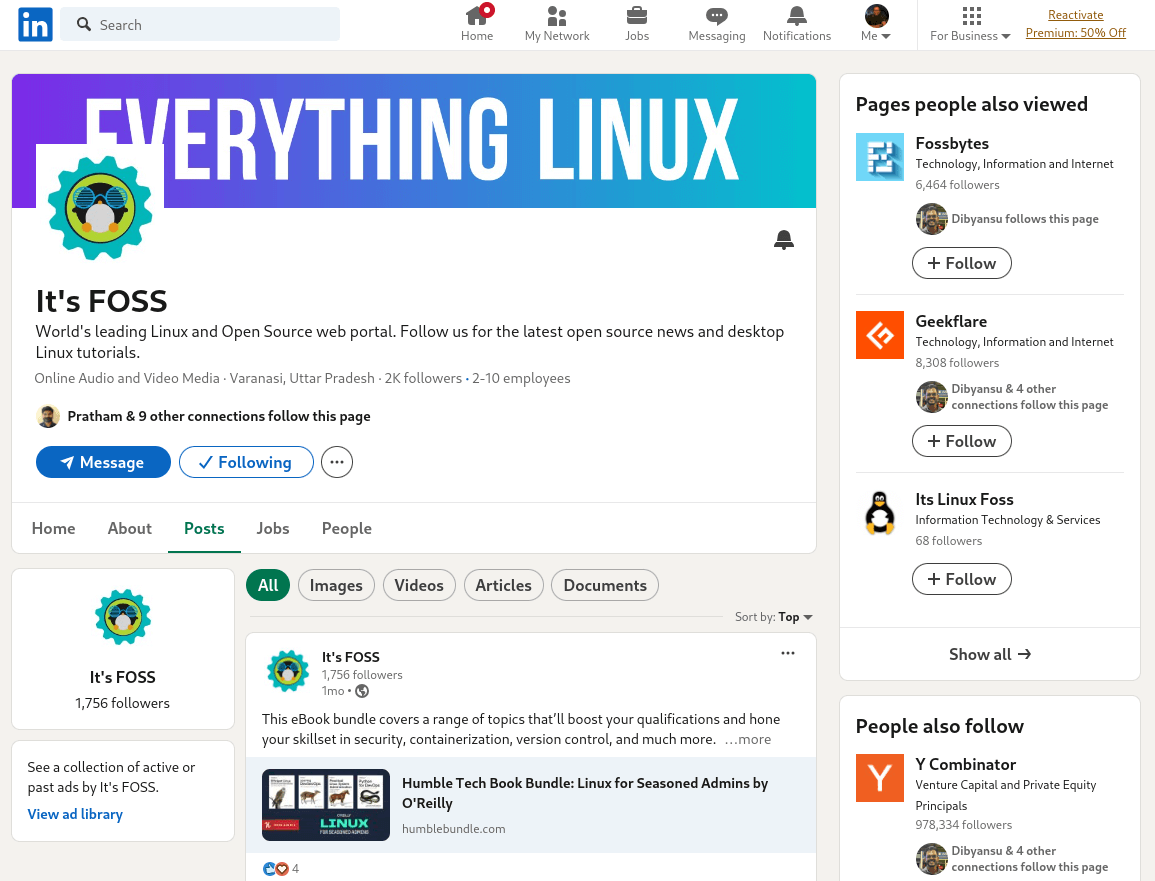
LinkedIn is the most popular business-focused social media platform out there. You can find all kinds of professionals on the platform, be it someone who's starting a new career fresh out of college, all the way to CEOs of multi-billion dollar companies.
Over the years, it has been growing consistently, both in terms of user count, and infrastructure. Its acquisition by Microsoft in 2016 has only accelerated that process in the years since.
Today, LinkedIn claims that they have 1 billion members in more than 200 countries/territories across the world. Their vision states that they want to “create economic opportunity for every member of the global workforce.”
In a recent announcement, the developers revealed that LinkedIn has successfully migrated to a new open-source, Linux-based operating system for their servers, virtual machines, and containers, ditching CentOS.
LinkedIn Bets On its Modern Linux Distro

As part of a massive migration campaign, LinkedIn has successfully moved their operations to Microsoft's Azure Linux as of April 2024, ditching CentOS 7 in the process and taking advantage of a more modern compute platform.
As many of you might already know, back on June 30, 2024, CentOS 7 reached the end-of-life status, resulting in no new future updates for it, including fixes for critical security vulnerabilities.
With this new operating system in place, the LinkedIn developers have managed to address various shortcomings of the previous setup, and have achieved things like better user-space handling, faster bootstrapping times on bare-metal servers/containers, effortless firmware updates, and more.
The developers have gone with the high-performing XFS filesystem, which was made to work with Azure Linux to fit LinkedIn's use case. In their testing, they found that XFS was performing well for most of their applications, except Hadoop, which is used for their analytics workloads.
When they compared the issues that cropped up, XFS came out as a more stable and reliable choice than the other candidate, Ext4.
Commenting on this major platform-wide change, Ievgen Priadka, who was part of the Systems Infrastructure team behind the migration, added that:
By embracing open-source solutions, LinkedIn, in partnership with Microsoft, harnessed the power of community-driven innovation and unlocked new levels of efficiency, agility, and competitiveness.
Additionally, LinkedIn's MaaS (Metal-as-a-Service) team has developed a new Azure Linux Image Customizer tool for automating image generation, that takes an existing generic Azure Linux image, and modifies it to use with a given scenario. In this case, a tailored image for LinkedIn.
In the end, for me, as a LinkedIn user, I haven't faced any kind of disruption to my use of the platform in the past few months. They have made sure that users do not face any major disruption.
I highly suggest you check out the detailed Engineering Blog Ievgen co-authored; it's filled with many interesting insights on how both LinkedIn and Microsoft developers were able to pull this off.
💬 Do you think Microsoft will ever launch a fully-fledged desktop Linux distro for general use? Just a question that came to my mind looking at Azure Linux here.
- Even the biggest players in the Linux world don't care about desktop Linux users. We do.
- We don't put informational content behind paywall. Your support keeps it open for everyone. Think of it like 'pay it forward'.
- Don't like ads? With the Plus membership, you get an ad-free reading experience.
- When millions of AI-generated content is being published daily, you read and learn from real human Linux users.
- It costs just $2 a month, less than the cost of your favorite burger.
Become a Plus Member today and join over 300 people in supporting our work.









